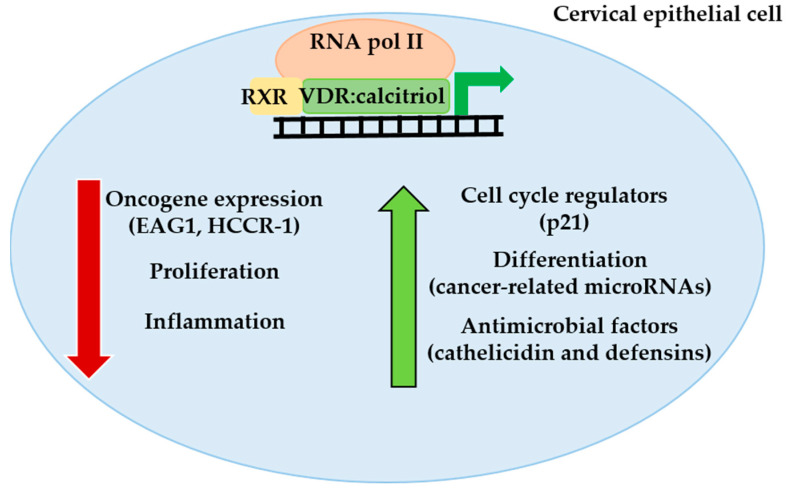Figure 2.
Antitumoral actions of calcitriol in cervical cancer cells. In cervical cells, calcitriol activates the vitamin D receptor (VDR), which binds with retinoid receptor X (RXR) and the heterodimer VDR-RXR is recruited to vitamin D-responsive elements in promoter regions of vitamin D-target genes, modulating the transcription mediated by RNA polymerase II. By this mechanism, calcitriol blocks the expression of some oncogenes such as the oncogenic potassium channel EAG1 or human cervical cancer oncogene HCCR-1; furthermore, calcitriol reduces proliferation and inflammation. On the other hand, calcitriol increases the expression of some critical cell cycle regulators such as p21, increases the maturation of some microRNAs with anti-cancer-related functions and promotes the expression of peptides with antiviral activity such as cathelicidin and defensins that could limit HPV infection. Together, these mechanisms support the protective role of calcitriol on cervical cancer.

